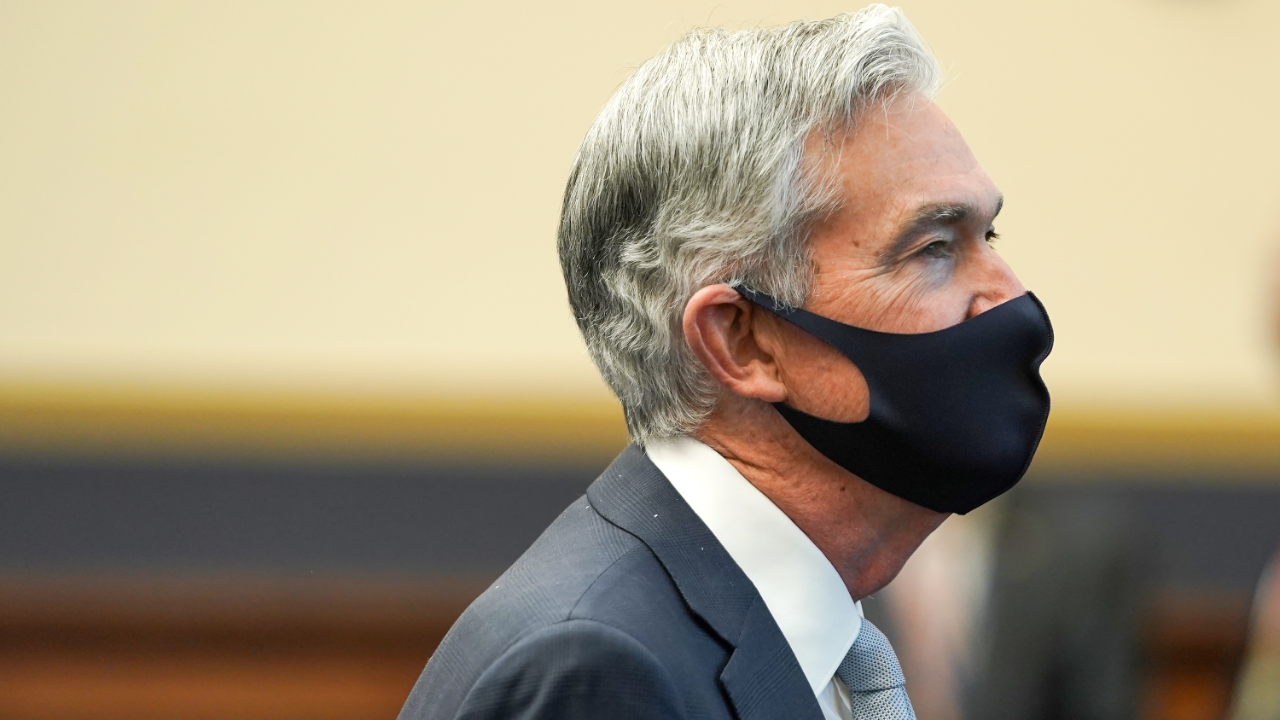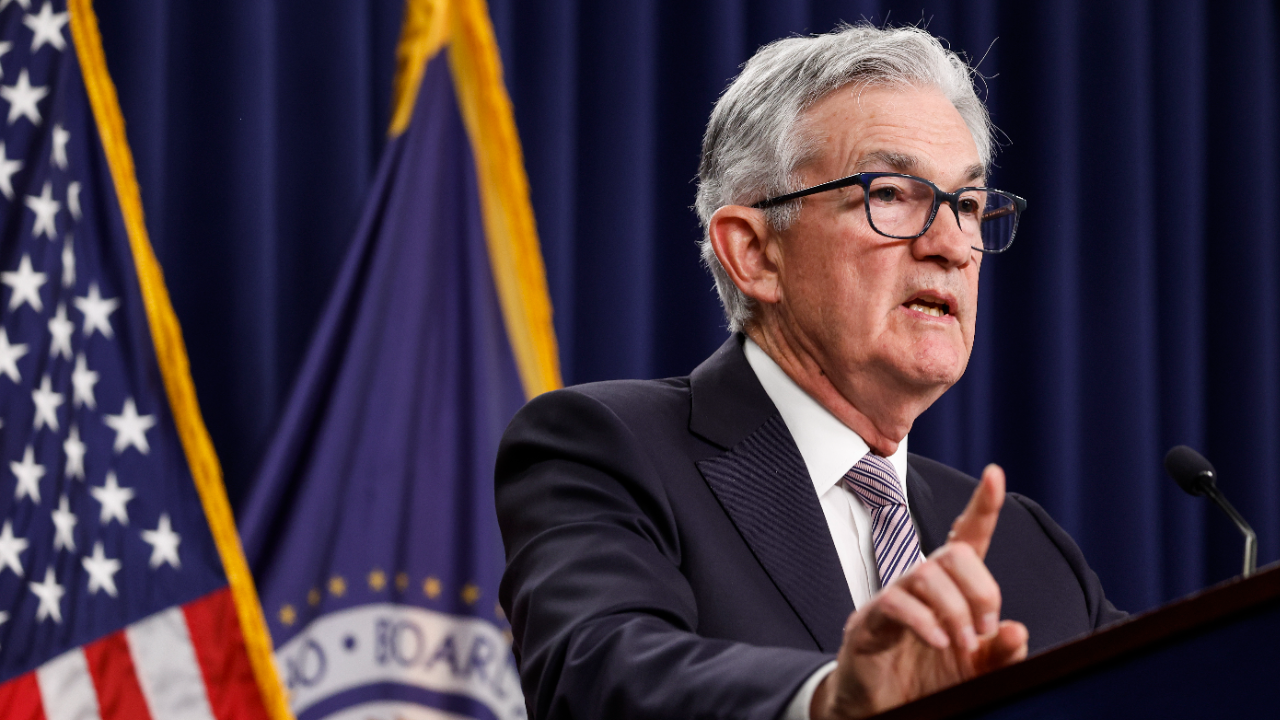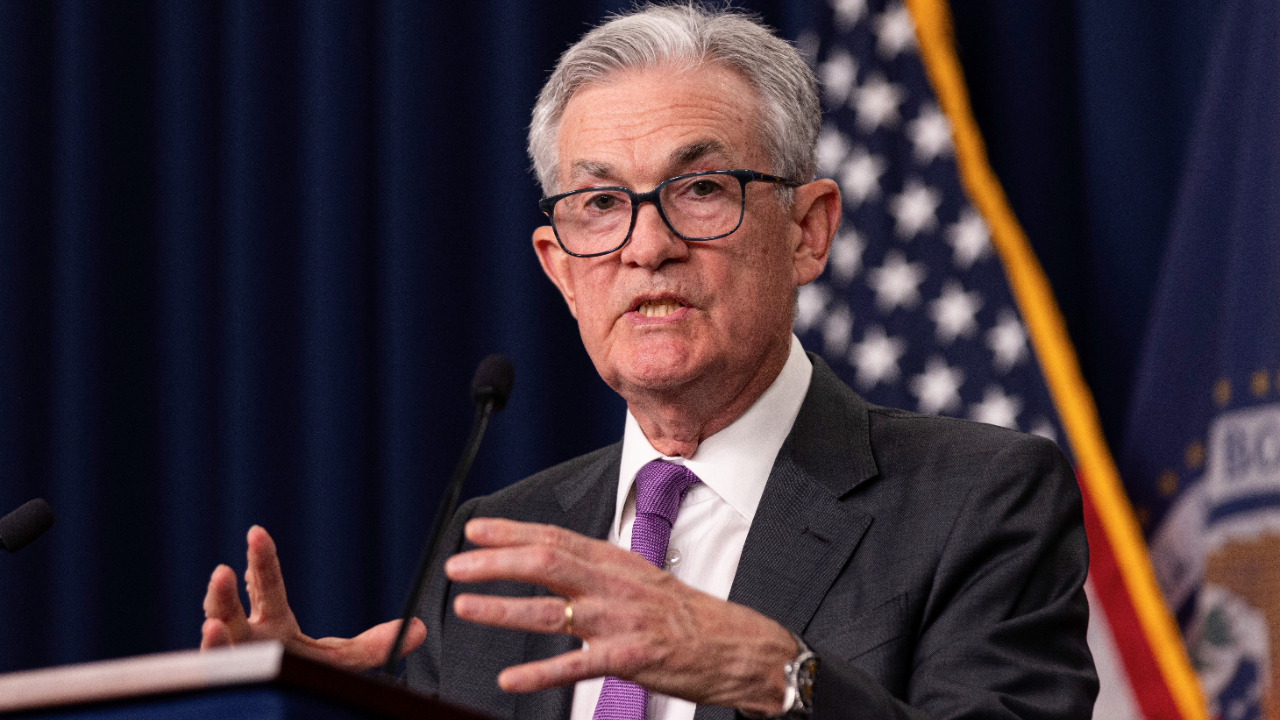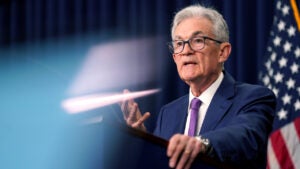Yield curve control, explained: How soon this ‘blank check’ Fed bond-buying program could happen

Federal Reserve Chairman Jerome Powell can say all he wants that the U.S. economy is “a long way away” from needing a rate hike. He can even downplay concerns about inflation or the financial system overheating.
But some investors just aren’t listening, and that might be what matters most.
Chaos last week in the Treasury market sent the 10-year rate swiftly surging back to levels not observed since before the COVID-19 pandemic, with the yield closing out February at 1.41 percent. The market messiness is already lifting up mortgage rates along with it in a swift spike that’s pushed up the 10-year almost 88 basis points from six months ago and nearly half a percentage point from the beginning of the year.
Investors appear to be increasingly worried that the Fed won’t lift rates soon enough. And that shocking twist of events is creating an unforeseen jam in the magical money machine that the Fed has used to roll out extraordinary emergency measures to steer the financial system out of its deepest hole since the Great Depression.
Fed officials may want to wait it out before quieting the tantrum. But one unconventional policy tool is grabbing the spotlight once again as a potential way for the Fed to try and calm the madness: “Yield curve control.”
Here’s what you need to know about yield curve control, including how it works and what risks it could have for your wallet.
What is yield curve control?
Let’s keep it simple and elaborate more later: Yield curve control is another (granted, more unconventional) way of interest-rate setting that involves buying as much U.S. Treasurys and government-backed debt as necessary to keep yields below a certain level.
Now for some background to make sense of the madness: Recall that the Fed’s tried-and-true method of monetary policy is controlling a benchmark interest rate that influences shorter-term forms of borrowing and savings. Those can be things like buying a car, carrying credit card debt or opening a certificate of deposit (CD).
But in more severe recessions, rock-bottom short-term interest rates aren’t always enough. The Fed will then want to influence interest rates on longer-dated borrowing, the king of them all being mortgage rates.
The Fed’s main method of doing that might already be a household name at this point, after being implemented twice during two once-in-a-lifetime recessions within 10 years of each other. It’s called “quantitative easing,” or Q.E. for short. The policy tool involves the Fed buying massive amounts of government-backed debt to keep the financial system awash with credit and push down borrowing costs.
Yield curve control is basically Q.E.’s awkward cousin. They’re related in that they both potentially involve purchasing trillions of dollars worth of Treasurys at a time. But they have an important distinction: Q.E. is quantity-minded. Yield curve control is price-minded.
“Quantitative easing is buying a specific amount of bonds every month or on a regular basis; yield curve control is more of a blank check,” says Greg McBride, CFA, Bankrate chief financial analyst. “It is about buying whatever quantity is necessary to keep yields below a certain level.”
How yield curve control would likely work
To understand how yield curve control works, you want to think about what a yield curve is.
The yield curve tracks yields on government bonds of varying durations, starting with the one-month Treasury and ending with the 30-year. That curve is typically upward-sloping, meaning investors demand a higher interest rate in compensation for locking their money up for a longer period.
Yield curve control would likely work by the Fed announcing specific rates and maturities it plans to target. Theoretically, those could go all the way out to the 30-year Treasury, the farthest-dated government bond. However, Fed Gov. Lael Brainard said in a November 2019 speech that the Fed might have the most firepower if it focuses on capping short-to-medium range Treasurys.
But complicating that strategy, longer-term Treasurys are what’s giving the Fed headaches right now, with interest rates next-to-nothing among earlier maturities.
“Right now, the problem isn’t the short-end of the curve,” McBride says. “Where you start to see the yield curve steepening, it’s more problematic at the 10-year mark. A lot of consumer and corporate borrowing is pegged to those longer maturity bonds.”
How yield curve control could impact your money
Yield curve control would provide households and businesses with additional accommodation by keeping interest rates not typically set by the Fed low. That could potentially be even more powerful than Q.E.
“Yield curve control is almost by definition more stimulative because it could potentially become an unlimited source of demand at certain levels of interest rates,” says Michael Reynolds, CFA, investment strategy officer at Glenmede.
The unconventional tool would also make government spending cheaper to finance and be a way for the Fed to put its low-rate promises into practice. That might help them avoid market choppiness that results in pushing up interest rates before the Fed is ready.
Consumers have now lived through two times when interest rates have been at historically low levels. Lower interest rates would weigh on savings yields and instead incentivize borrowing and spending because it reduces borrowing costs, making it a more attractive time to buy assets like a home or a car. The practice often tends to help push stock prices higher as investors shift cash into other avenues that can help make them more money. But it also comes with fine print.
Why is yield curve control such a hot topic right now?
A number of factors are at play in today’s current bond market sell off. Market participants are nervous that inflation might pick up during a post-pandemic spending boom at a time when the money supply is already at its highest ever, forcing the Fed to walk back accomodation sooner than it’s promising.
Investors might also be reacting to expectations for stronger economic growth. Gross domestic product, the broadest scorecard of the U.S. economy, is expected to return to its pre-pandemic levels at the end of this year. Before the coronavirus pandemic roiled markets and ravaged the economy, the 10-year yield was around 1.8 percent.
“That’s a proxy for what we’re seeing now,” McBride says. “If the economy is going to return to its pre-pandemic size, then pandemic-level, recession scenarios on long-term yields no longer apply… Ultimately, the rubber has to meet the road in how the economy performs. If economic reality falls short of economic expectations, yields are going to fall pretty fast.”
Fed Chair Powell spent two days reiterating to Congress in a late February testimony that the economy is “a long way” from the Fed’s goals, meaning more accommodation and lower-for-longer rates. But investors aren’t completely trusting of that, with a growing number now betting on a rate hike as soon as April, according to CME Group’s FedWatch tool.
The Fed could be concerned with the run up in yields “if you saw measurable impact on the housing market and corporate investment” because of it, McBride says. Noticing that would take more time, “but that’s probably a good thing because this isn’t something where you would want a knee-jerk reaction from the Fed.”
Is yield curve control likely to happen anytime soon?
New York Fed President John Williams has said officials are “thinking very hard” about yield curve control. Others, including Dallas Fed President Robert Kaplan, say they’re still skeptical. A Bankrate survey from June of the nation’s top Fed experts shows that 79 percent see the Fed eventually implementing it.
How soon that happens is the ultimate question. Yields might not be too high from the Fed’s vantage point. When it comes to the 10-year, for example, the Fed wouldn’t want to see it trade substantially above what’s seen as the neutral rate, which is somewhere in the ballpark of 2.1 percent, according to Reynolds.
“Monetary conditions are relatively easy when you’re below. And when you’re above, monetary conditions are a bit tight,” he says. “That’s going to prompt the Fed to think critically. In effect, we don’t want monetary conditions to get too tight. We want to stay accommodative through the recovery.”
But the Fed might want to turn to other measures before resorting to something as tricky and unpracticed as yield curve control (though officials did implement a similar iteration of it back in World War II). Some of those steps could be ramping up asset purchases altogether or even shifting the composition to more longer-dated assets.
What are the unintended consequences of yield curve control?
Once you cross a line that hasn’t been crossed before, it becomes more challenging to find your way back. If the market has a different idea of where the neutral 10-year yield stands and it’s higher than the Fed’s rate cap, that could unravel a new set of challenges once the Fed starts to withdraw those rate pegs.
“You could see some pretty strong moves in interest rates as the market adjusts,” Reynolds says.
Up for debate is how quickly to withdraw accommodation and in what order. For instance, the Fed might start to raise short-term rates before it tapers its bond purchases or starts to lift its yield caps, but having both going on at the same time would also be counterproductive.
The policy might also open up a communication trap door. Yield caps might only be fully effective if markets see it as credible and inflation as an insubstantial risk. Officials could open themselves up to a whole new set of possible blunders as they communicate to markets what’s next at a time when they might not have figured it out for themselves.
Massive federal spending to blunt the blow of the coronavirus crisis that’s in part been encouraged by rock-bottom rates might back the Fed into a corner.
Yield curve control “may be one of the last resorts if they need to get interest rates under control,” Reynolds says.
Bottom line
All of this illustrates just how wide the U.S. central bank sometimes has to spread its wings over financial markets and the economy while trying to prop up the system with rock-bottom interest rates. It isn’t so much about cutting borrowing rates anymore, but about throwing out all the stops against a crisis.
“The unintended consequence anytime you’ve got the central bank manipulating the money supply, interest rates and the financial system are inflation and asset bubbles,” McBride says. “If the more markets go up or the more asset prices go up, the more cautious one should be.”






